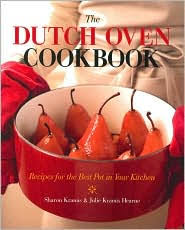
This recipe turns out great when slow-cooked in a Dutch Oven. One of the "holy trinity" of peppers, the pasilla is a dried chilaca chile, and is one of my Mom and my favorite peppers to cook with. It's wonderful in moles and sauces. Its smoky yet mild flavor gives this dish an exceptional depth.
Baked Short Ribs with Pasilla Pepper Sauce
Makes 6 to 8 Servings
1 dried pasilla pepper, rehydrated, seeded, stemmed, and finely chopped (To rehydrate the pasilla pepper, place it in a bowl, cover with boiling water and soak for 5 minutes)
4 pounds beef short ribs (boneless), rinsed and patted dry, excess fat trimmed
Salt and freshly ground black pepper
1 Tablespoon olive oil
1 Tablespoon butter
1 medium yellow onion, diced
4 cloves garlic, peeled and minced
1/2 cup pureed roasted red peppers (if using canned roasted red peppers, be sure to drain and rinse them before pureeing)
One 14.5 ounce can tomato sauce
1/2 cup red wine
2 whole star anise
1/4 teaspoon ground cinnamon
1 teaspoon Chinese five-spice powder
2 bay leaves
- Position a rack in the center of the oven and preheat to 350 degrees F.
- To prepare the ribs, season with salt and pepper on both sides. Put a 12" cast iron skillet over medium heat, then add the ribs, fat side down. Cook turning once, until browned on all sides, for 2-3 minutes. Transfer the ribs to a plate and reserve.
- Meanwhile, in a 5 1/2-quart Dutch oven add the oil butter and heat over medium-low heat. Add the onions and cook until they start to soften, for about 5 minutes. Add the garlic and cook for 2 minutes, stirring occasionally. Add the pureed roasted red peppers, pasilla pepper, tomato sauce red wine, star anise, cinnamon, five-spice powder, and bay leaves. Add the short ribs back to the pot. Wrap the lid with a slightly damp kitchen towel, pulling tight, placing the corners on top of the pot. Do not let the towel fall into the dish.
- Put the Dutch oven in the preheated oven on the middle rack. Cook until the meat falls apart easily with a fork, about 1 1/2 - 2 hours. Serve on a plate with buttered egg noodles.






